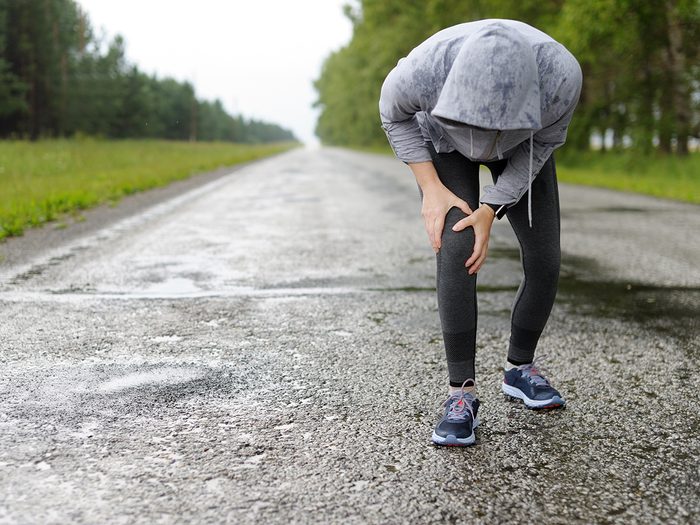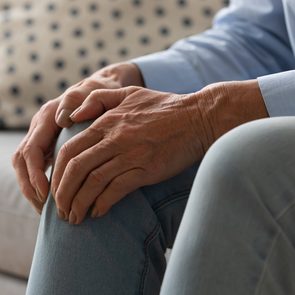You’re Not Imagining It—Weather Really Does Affect Joint Pain

There’s some truth to the age-old belief that achy joints are a sign that bad weather is on the way. It’s not just anecdotal: research shows a relationship between pain levels and changes in weather, particularly for people who suffer from chronic conditions such as arthritis.
“Some people with arthritis say they can predict weather, or that the weather changes their level of pain,” says Siân Bevan, chief science officer at Arthritis Society Canada.
The name of a 2019 U.K. study, “Cloudy With a Chance of Pain,” says it all. It analyzed the daily pain logs of 13,000 residents with arthritis, fibromyalgia, migraines and neuropathic pain. Using GPS data from participants’ smartphones, the researchers found correlations between pain and relative humidity, pressure and wind speed. Participants were more likely to experience aches and pains on stormy, windy days and least likely to do so when conditions were dry and calm.
It’s unclear why changes in weather may influence pain severity for some people and not for others. “Everyone experiences pain differently,” says Bevan. “There are a lot of factors that could impact pain tolerance, including sleep, stress and depression.”
One common theory is that the drop in barometric pressure that usually precedes a storm causes a change in pressure within the joints, contributing to pain. (The belief is that as air pressure decreases, it allows our tissues to enlarge slightly, which irritates the joints.)
It’s a good idea to track your symptoms and how certain weather conditions may affect your pain levels, says Bevan. “From there you can manage expectations for what can be accomplished on days when symptoms are worse.”
Perhaps not surprisingly, there’s evidence that the weather may also impact your mood. A 2013 Canadian research paper published in the Journal of Happiness Studies found that women are more sensitive to weather changes than men and that life satisfaction decreased among women on days with heavy rainfall.
A second study, published in a 2011 issue of the American Psychological Association journal Emotion, analyzed Dutch teenagers and grouped them by “weather personality” type. Roughly nine per cent were “rain haters”; they felt angrier and less happy on days with a lot of precipitation.
There are multiple reasons for this correlation, according to Dr. Max Pemberton, a U.K.-based psychiatrist. “Less sunlight affects your levels of melatonin, a hormone directly involved in mood regulation.”
Biologically, this could explain why some people feel down when there is little sun, with the extreme version of this known as seasonal affective disorder. A sun lamp may help: exposure to this type of bright light has a positive impact on melatonin and serotonin (another mood-regulating hormone).
There are also psychological and social reasons why some people feel sad or moody when it rains. For one thing, bad weather may contribute to social isolation and loneliness because we can’t go outside and do the things we enjoy with friends and family, explains Pemberton.
Once you understand how the weather impacts you physically or mentally, there are strategies you can try. For example, if you’re sensitive to cold, damp weather, a hot bath or just a warm compress could provide relief for achy joints. Regular exercise—even if it has to be indoors—is also known to improve mood and is an important part of pain control.
Now that you know how weather affects joint pain, find out if cracking your knuckles is bad for you.






